- The early experiences with drawing and painting emerge here with renewed poeticity. Bodies as landscapes, body parts as segments of a single soul. Drawing on glass, created "from life" and hot fixed.
- Fusion of glass slabs, repeatedly melted with the gradual addition of further glass within the slab, both ground or powdered, which creates the "atmosphere" in which the drawing will be set.
- Fragments of coloured glass are dripped directly into the crucible, so that they can merge at high temperature. In such a way, single blocks of unique hues are created and added to a personal colour palette. These blocks are used as broad brush strokes, which strengthen and complete the "painting" by being cast together in a mold with the drawing and the warm glass.
- Mold casting: once the whole glass mass is fused, the last, crucial operation involves submerging the whole work in molten glass. With the last manual intervention, the author impresses the movements of a water surface on the fluid mass, as if shaken by underground vibrations.
Cold working completes the process.
By recreating a little "furnace" in her laboratory, Nives gave birth to this new technique, which paves the way for novel artistical interpretation
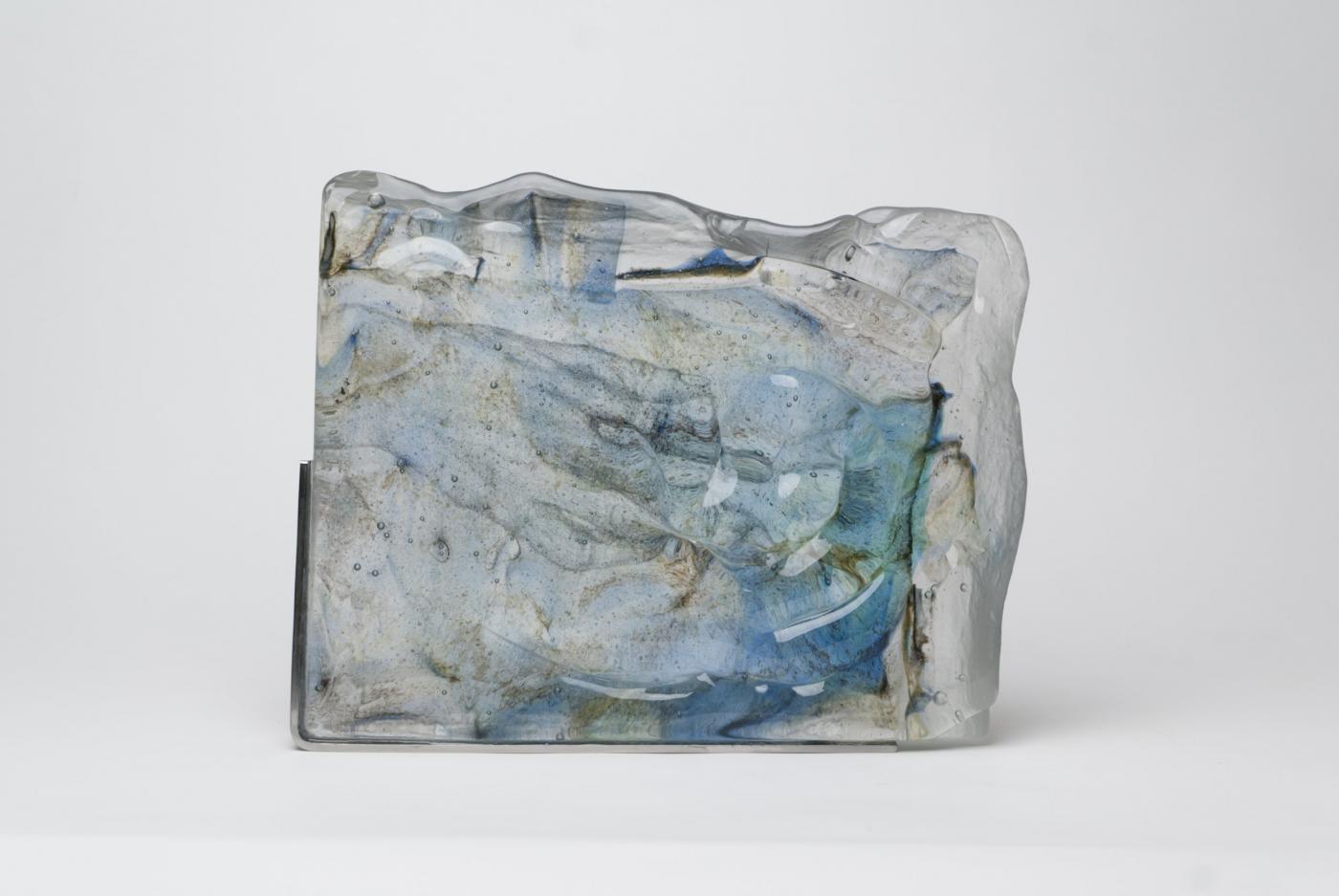
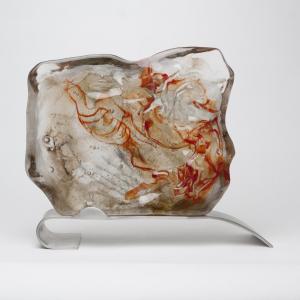
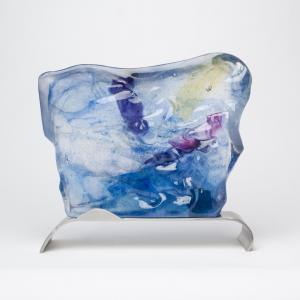


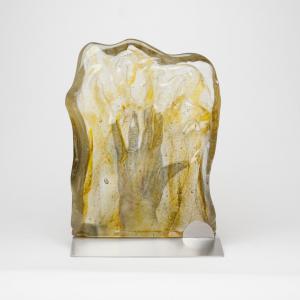
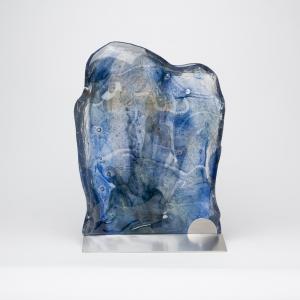
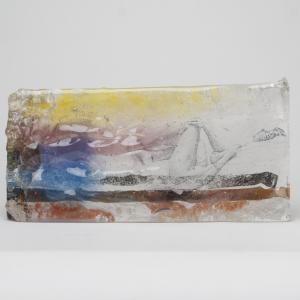
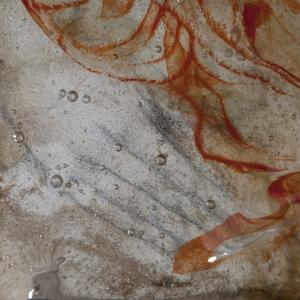






Comments 1
Say something